How to choose the right glue for PVC pipes + an overview of gluing technology
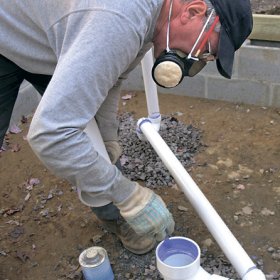
The connection of polypropylene pipes used in the installation of water supply systems (cold water and hot water), heating and sewage is carried out in several ways. Most often, such pipes are welded using a special apparatus that is powered by the mains, and nozzles are selected depending on the diameter of the soldered products. Welding equipment, complete with nozzles and pipe cutters, can be purchased for personal use or rented. However, you can use another, less common, method consisting in gluing pipes. Specialists call this option “cold” welding. To ensure a reliable connection of the individual elements of the pipeline, it is necessary to choose an adhesive suitable for these PVC pipes. The strength of the bonded joint is comparable to welding. Nevertheless, it is better to use the gluing method only during the installation of cold water (cold water supply systems).
Composition and principle of action of adhesive materials
Any adhesive for polypropylene pipes is based on polyvinyl chloride, which dissolves in tetrahydrofuran, methyl ethyl ketone and cyclohexanone.
In addition, various additives are added to two-component adhesive materials to increase the adhesion efficiency, as well as to control the setting time and viscosity of the mixture. In the process of hardening the glue, evaporation of the solvents and weaving of the chains of polymeric PVC molecules in the parts to be bonded occur. Thus, it is possible to obtain a connection having the same characteristics as an integral PVC pipe.
Important! For installation work, it is advisable to purchase well-known and proven glue brands such as Tangit (Tangit, Germany), Griffon (Griffon, Holland) or Gebsoplast (Gebsoplast, France). Subject to the instructions attached to these adhesive materials, the quality of the result is guaranteed.
What to look for when buying glue for PVC?
When buying glue, it is necessary to take into account information about its purpose, which is indicated by the manufacturer on the package. You should also carefully familiarize yourself with the properties of the material, among which is the setting time of the adhesive. At room temperature, this parameter is usually four minutes. As the temperature rises to 40 ° C, setting time is reduced to one minute. In addition, manufacturers reflect on the product packaging the color, density, flash point, and viscosity of the material. Information is also important on the method of application of the adhesive, as well as on the storage conditions of the remaining substance.
How to prepare and glue the elements of a plastic pipeline?
Regardless of whether you glue individual parts from PVC or weld, it is necessary to carry out their preparation. The execution of work is organized in dry rooms at an air temperature of + 5 ° C to a maximum of + 35 ° C. To apply glue, you need a brush made of natural bristles.Usually the brush comes with glue.
- Cutting pipe lengths of the desired length is carried out using scissors, pipe cutters, allowing you to get an even cut without burrs. If such a tool is not available, then this operation is performed by any saw with small teeth. After that, the edges of the cut must be cleaned with sandpaper to remove burrs and burrs that impede the tight connection.
Then the whole structure is dry-assembled without applying adhesive to carry out the fitting and mark with a marker all the places of gluing and the depth of pipe entry into the fittings. After that, the assembled pipeline is disassembled for further preparation of the parts for gluing.
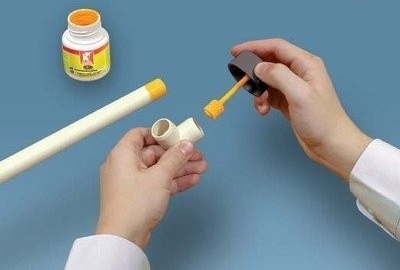
After degreasing the surfaces of the parts to be glued, a thin layer of glue is applied with a brush
- Before applying glue for plastic pipes to the marked areas, degrease and clean their surface using cleaners produced by the same manufacturer.
- Before use, glue is thoroughly mixed.
- Then apply a smooth and thin layer of glue with a brush on the sockets of the connecting fittings, and then on the pipe in the longitudinal direction.
- Insert the plastic pipe into the fitting hole until it stops, being guided by the marks made by the marker during fitting, while not rotating the parts and not swinging.
For several seconds (15 or more), they try to firmly hold the glued parts so that the adhesive begins to dry out.
- Excess glue protruding along the edges of the joint is cleaned with a paper towel.
- Do not move just glued pipes for 5-15 minutes.
- Fill the pipeline with water and test it for strength under pressure should be 24 hours after completion of gluing its constituent elements.
Important! Remember that glue can easily ignite, therefore it is stored away from open flame. When working with glue it is forbidden to smoke. Hand skin must be protected from adhesive by gloves.
Causes of defects when gluing PVC pipes
The uneven application of glue, as well as the presence of large irregularities on the surface of the areas to be glued, can lead to partial non-sticking. Continuous glue occurs if the layers of glue are overdried. Remember that you only have a couple of minutes to complete the connection.
The appearance of a soft adhesive layer is explained by a low ambient temperature or insufficient time allotted for the curing of the adhesive. However, there is no complete removal of the solvent from the composition of the adhesive included in its formulation.
The porosity of the adhesive layer is formed in the presence of air inclusions in the adhesive layer resulting from poor mixing of the components or during application. The skew of the connection is due to insufficient fixation of the parts to be glued, as well as the assumption of their displacement during the hardening of the adhesive material. In the presence of dirt on the areas to be glued and not using a special cleaner, it is not possible to wet the surfaces with glue.
We hope that this material helped you understand how to choose the right special glue for plastic products. You also learned how to glue plastic pipes and prevent the formation of defects that reduce the strength of the pipe joint.
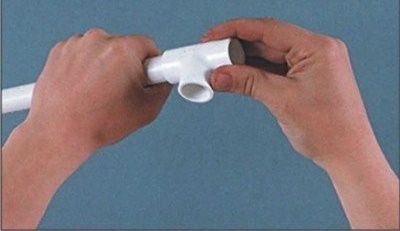
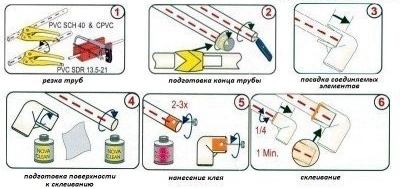
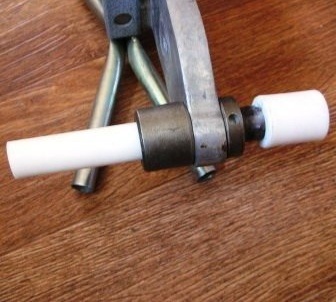
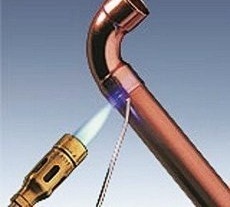
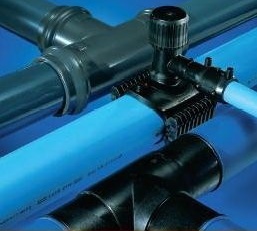
7 comments